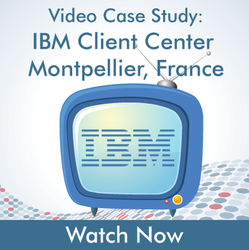The popularity of the Internet of Things (IoT) has driven an overwhelming number of companies to align themselves with the term, however only a select few have truly embraced the concept. Those that have are designing and delivering impressive applications built around organizational, commercial and operational efficiency.
GreenBiz highlighted one example this week with a fascinating article exploring AT&T’s Foundry, the company’s IoT innovation center. The Foundry team’s drive to innovate and improve business processes matches RF Code’s own ambitions for the Workplace IoT.
 From the data center to supply yards, the Workplace IoT extends across an organization in limitless ways. Staff can be equipped with wearable technology to ensure compliance with insurance policies. Office energy distribution and usage can be monitored. The CFO can be instantly notified of any financial implications from a misplaced or under-utilised asset in a production factory.
From the data center to supply yards, the Workplace IoT extends across an organization in limitless ways. Staff can be equipped with wearable technology to ensure compliance with insurance policies. Office energy distribution and usage can be monitored. The CFO can be instantly notified of any financial implications from a misplaced or under-utilised asset in a production factory.
However, as highlighted by the Foundry’s connected trash container, the simplest applications often deliver the most impressive business outcomes. AT&T’s inquisitive engineers began by retrofitting a standard trash can with sensors, before choosing to approach the idea with more structure. The result was an inanimate object transformed into a connected item offering tangible business benefits.
Trash for Cash
Optimizing a trash can may sound overzealous, however the advantages are clear. More efficient cleaning staff, fewer overloaded containers, and an audit trail should sensitive documents be stolen.
The Workplace IoT is as much about incremental savings as it is about headline figures. Our customers offer evidence of this. Some, like IBM, have delivered tens of millions of dollars in savings using the Workplace IoT. Others have focused on minor alterations - one degree Fahrenheit increase here, one asset tracked there - that once multiplied across a global organization equates to similarly compelling savings.
It is hardly surprising then, to see so many companies either join the industry or re-market their service offerings as IoT enabled. Cisco introduced a new system this week designed to bring together the company’s existing solution portfolio, IBM made headlines in April with a $3billion investment strategy for the IoT and Dell revealed its IoT intentions in June.
For many organizations the Workplace IoT is a relatively new concept, for us it has been central to our corporate mission for over seventeen years, as demonstrated by our recent shortlisting in the inaugural category for this year’s Computing Vendor Excellence Awards.
The market can be complex, as some providers rely on unfounded promises, so it is crucial to search for credible insight from companies with a proven track record. It is one reason why our blog is regularly praised as an authority in Workplace IoT leadership. We always welcome any comments or discussion on social media around the Workplace IoT, so please feel free to share your thoughts on where you believe the market is heading.




